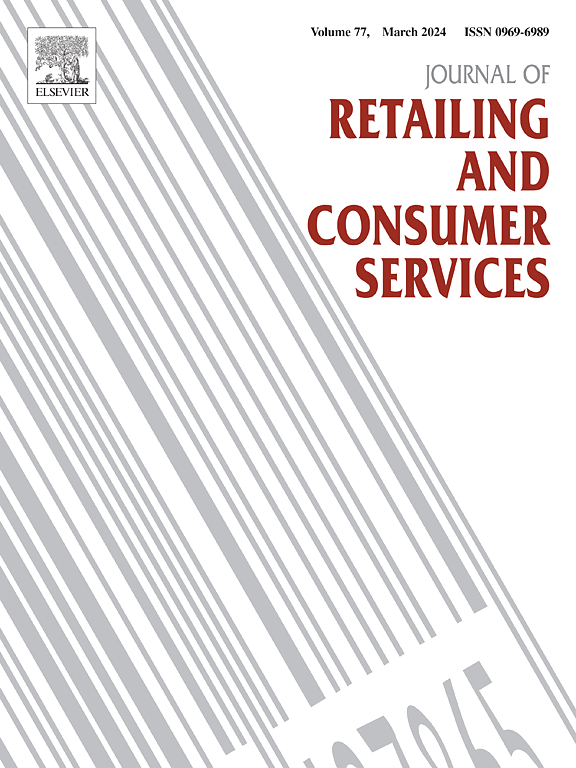The scarcer, the more eager to buy? How does the scarcity of blind box products affect impulse purchase intention
IF 13.1
1区 管理学
Q1 BUSINESS
Journal of Retailing and Consumer Services
Pub Date : 2025-10-10
DOI:10.1016/j.jretconser.2025.104567
引用次数: 0
Abstract
As an emerging consumption model, blind boxes are characterized by a distinct form of product scarcity in their sales. This study examines the blind box consumption scenario to explore how product scarcity (supply scarcity vs. demand scarcity) influences consumers' impulse buying intentions. Drawing on commodity theory, accessibility-diagnosability theory, and regulatory focus theory, the research is conducted through three experiments. Study 1 identifies the main effect, revealing that product scarcity positively impacts impulse buying intentions, with supply scarcity having a significantly stronger influence than demand scarcity. Study 2 uncovers the mediating mechanism, demonstrating that accessibility-diagnosability fully mediates the relationship between product scarcity and impulse buying intentions. Study 3 investigates the moderating effect, showing that regulatory focus moderates both the impact of product scarcity on impulse buying intentions and the mediating role of accessibility-diagnosability. Specifically, stronger impulse buying intentions are observed under a preventive focus in demand scarcity and a promotional focus in supply scarcity. The findings contribute to the application of scarcity theory in experiential products and offer valuable theoretical insights and practical recommendations for blind box enterprises in developing targeted marketing strategies and industry standards.
越稀缺,越渴望购买?盲盒产品的稀缺性如何影响冲动购买意愿
盲盒作为一种新兴的消费模式,其销售表现出一种鲜明的产品稀缺性。本研究检视盲盒消费情境,探讨产品稀缺性(供给稀缺性vs需求稀缺性)如何影响消费者冲动购买意愿。借鉴商品理论、可及性-可诊断性理论和监管焦点理论,通过三个实验进行研究。研究1确定了主要效应,发现产品稀缺性正向影响冲动购买意愿,其中供应稀缺性的影响显著强于需求稀缺性。研究2揭示了可及性-可诊断性在产品稀缺性与冲动购买意愿之间的中介作用机制。研究3研究了调节效应,发现监管焦点调节了产品稀缺性对冲动购买意愿的影响和可及性-可诊断性的中介作用。具体而言,在需求稀缺的预防性焦点和供应稀缺的促销性焦点下,可以观察到更强的冲动购买意愿。研究结果有助于稀缺性理论在体验产品中的应用,为盲箱企业制定针对性营销策略和行业标准提供有价值的理论见解和实践建议。
本文章由计算机程序翻译,如有差异,请以英文原文为准。
求助全文
约1分钟内获得全文
求助全文
来源期刊
CiteScore
20.40
自引率
14.40%
发文量
340
审稿时长
20 days
期刊介绍:
The Journal of Retailing and Consumer Services is a prominent publication that serves as a platform for international and interdisciplinary research and discussions in the constantly evolving fields of retailing and services studies. With a specific emphasis on consumer behavior and policy and managerial decisions, the journal aims to foster contributions from academics encompassing diverse disciplines. The primary areas covered by the journal are:
Retailing and the sale of goods
The provision of consumer services, including transportation, tourism, and leisure.

 求助内容:
求助内容: 应助结果提醒方式:
应助结果提醒方式:


